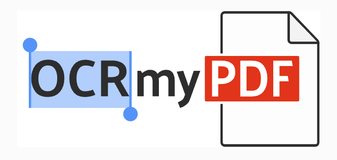1. 使用pip安装PyPDF2
PyPDF2支持如下版本的Python解释器:
直接使用pip即可安装:pip install PyPDF2
2. 使用PyPDF2提取PDF文档内容的简单示例
以一篇论文文档为例,展示PyPDF2如何提取PDF文件中的内容。
论文《ImageNet Classification with Deep Convolutional Neural Networks》,一共9页,其首页布局为:
Python脚本代码:
from PyPDF2 import PdfReader #早期版本里叫PdfFileReader,已经过时,改名为PdfReader了,见:https://pypdf2.readthedocs.io/en/latest/_modules/PyPDF2/_reader.html?highlight=PdfFileReader# reader = PdfReader(pdf_path) number_of_pages = len(reader.pages) #1.28.0版本之前用numPages,已经过时,见:https://pypdf2.readthedocs.io/en/latest/modules/PdfReader.html#PyPDF2.PdfReader.numPages print(number_of_pages) #打印页数 page = reader.pages[0] #1.28.0版本之前用getPage(pageNumber),已经过时,见:https://pypdf2.readthedocs.io/en/latest/modules/PdfReader.html#PyPDF2.PdfReader.getPage print(page) #打印“PDF第一页”这个Page<PyPDF2._page.Page>对象 text = page.extract_text() #1.28.0版本之前用extractText(),已经过时,见:https://pypdf2.readthedocs.io/en/latest/modules/PageObject.html#PyPDF2._page.PageObject.extractText print(text) #提取出第一页的文字
输出:
9 {'/Contents': IndirectObject(13, 0), '/Parent': IndirectObject(1, 0), '/Type': '/Page', '/Resources': IndirectObject(14, 0), '/MediaBox': [0, 0, 612, 792]} ImageNet Classication with Deep Convolutional Neural Networks Alex Krizhevsky University of Toronto kriz@cs.utoronto.ca Ilya Sutskever University of Toronto ilya@cs.utoronto.ca Geoffrey E. Hinton University of Toronto hinton@cs.utoronto.ca Abstract We trained a large, deep convolutional neural network to classify the 1.2 million high-resolution images in the ImageNet LSVRC-2010 contest into the 1000 dif- ferent classes. On the test data, we achieved top-1 and top-5 error rates of 37.5% and 17.0% which is considerably better than the previous state-of-the-art. The neural network, which has 60 million parameters and 650,000 neurons, consists of ve convolutional layers, some of which are followed by max-pooling layers, and three fully-connected layers with a nal 1000-way softmax. To make train- ing faster, we used non-saturating neurons and a very efcient GPU implemen- tation of the convolution operation. To reduce overtting in the fully-connected layers we employed a recently-developed regularization method called fidropoutfl that proved to be very effective. We also entered a variant of this model in the ILSVRC-2012 competition and achieved a winning top-5 test error rate of 15.3%, compared to 26.2% achieved by the second-best entry. 1 Introduction Current approaches to object recognition make essential use of machine learning methods. To im- prove their performance, we can collect larger datasets, learn more powerful models, and use bet- ter techniques for preventing overtting. Until recently, datasets of labeled images were relatively small Š on the order of tens of thousands of images (e.g., NORB [16], Caltech-101/256 [8, 9], and CIFAR-10/100 [12]). Simple recognition tasks can be solved quite well with datasets of this size, especially if they are augmented with label-preserving transformations. For example, the current- best error rate on the MNIST digit-recognition task (<0.3%) approaches human performance [4]. But objects in realistic settings exhibit considerable variability, so to learn to recognize them it is necessary to use much larger training sets. And indeed, the shortcomings of small image datasets have been widely recognized (e.g., Pinto et al. [21]), but it has only recently become possible to col- lect labeled datasets with millions of images. The new larger datasets include LabelMe [23], which consists of hundreds of tho usands of fully-segmented images, and ImageNet [6], which consists of over 15 million labeled high-resolution images in over 22,000 categories. To learn about thousands of objects from millions of images, we need a model with a large learning capacity. However, the immense complexity of the object recognition task means that this prob- lem cannot be specied even by a dataset as large as ImageNet, so our model should also have lots of prior knowledge to compensate for all the data we don't have. Convolutional neural networks (CNNs) constitute one such class of models [16, 11, 13, 18, 15, 22, 26]. Their capacity can be con- trolled by varying their depth and breadth, and they also make strong and mostly correct assumptions about the nature of images (namely, stationarity of statistics and locality of pixel dependencies). Thus, compared to standard feedforward neural networks with similarly-sized layers, CNNs have much fewer connections and parameters and so they are easier to train, while their theoretically-best performance is likely to be only slightly worse. 1
可以看到页数和PDF中的文字都能正确提取出来。




